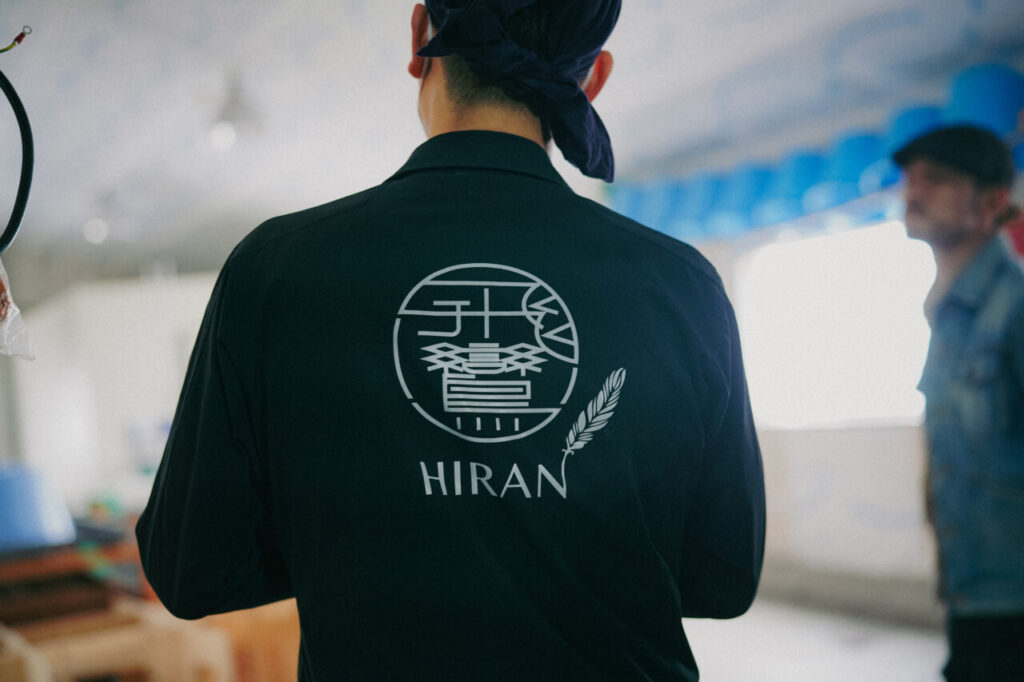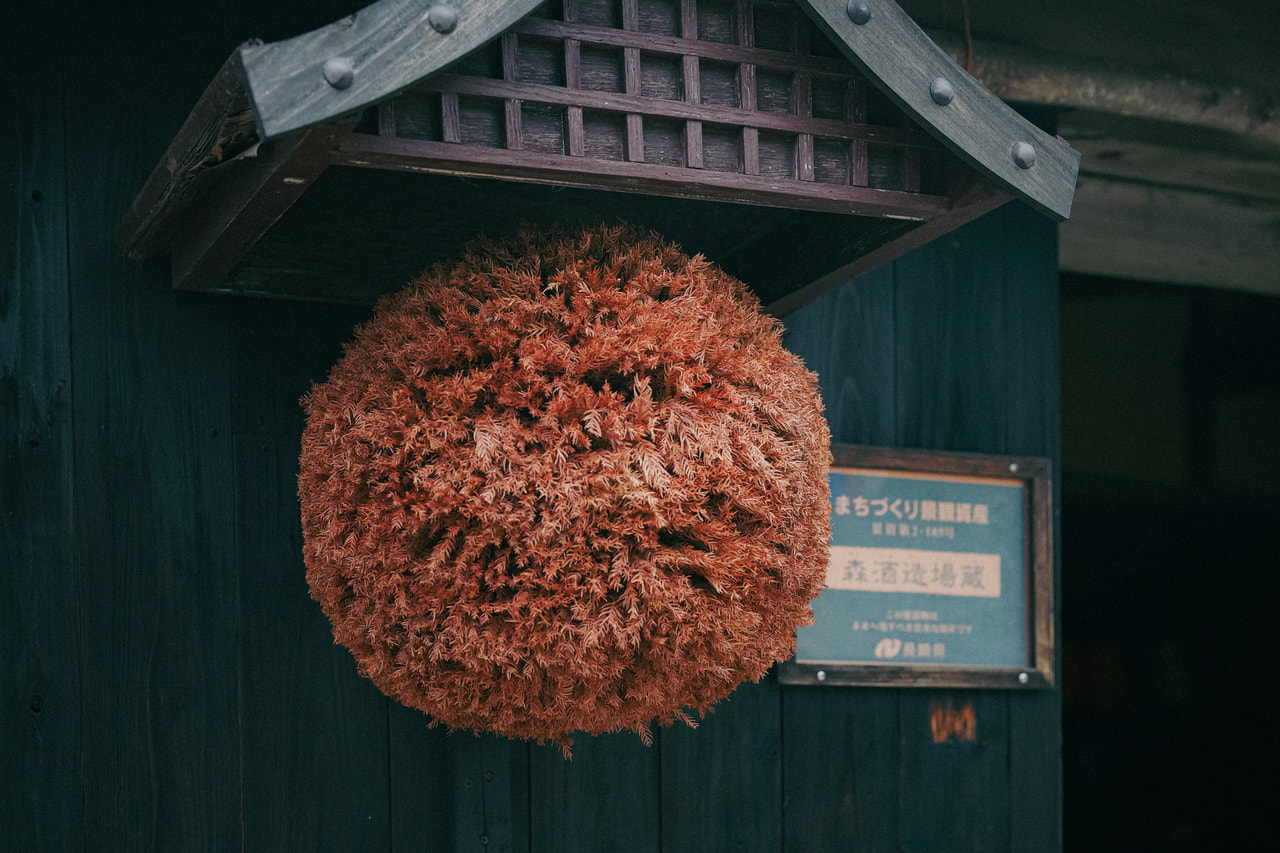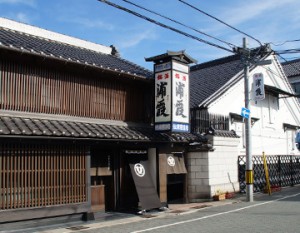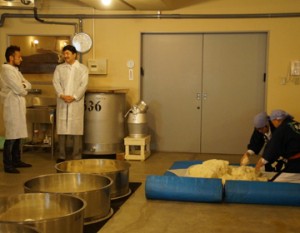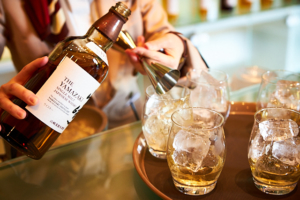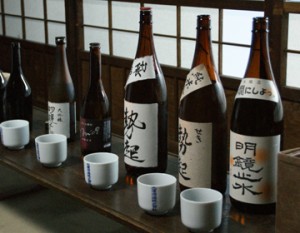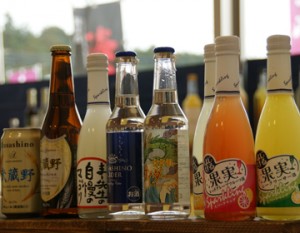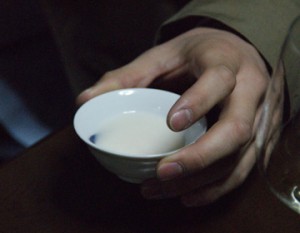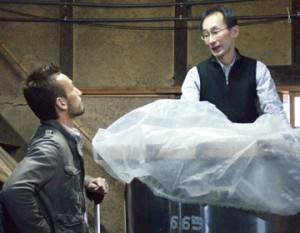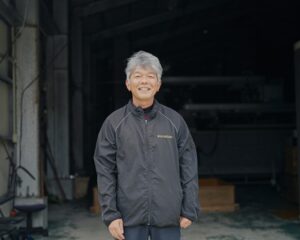In 2018, a young master brewer revived a brewery that was on the verge of going out of business, turned the helm to classic sake brewing, and continues to produce a string of high-profile products. How does he achieve such skill and inquisitiveness?
An up-and-coming toji who is highly respected in the industry
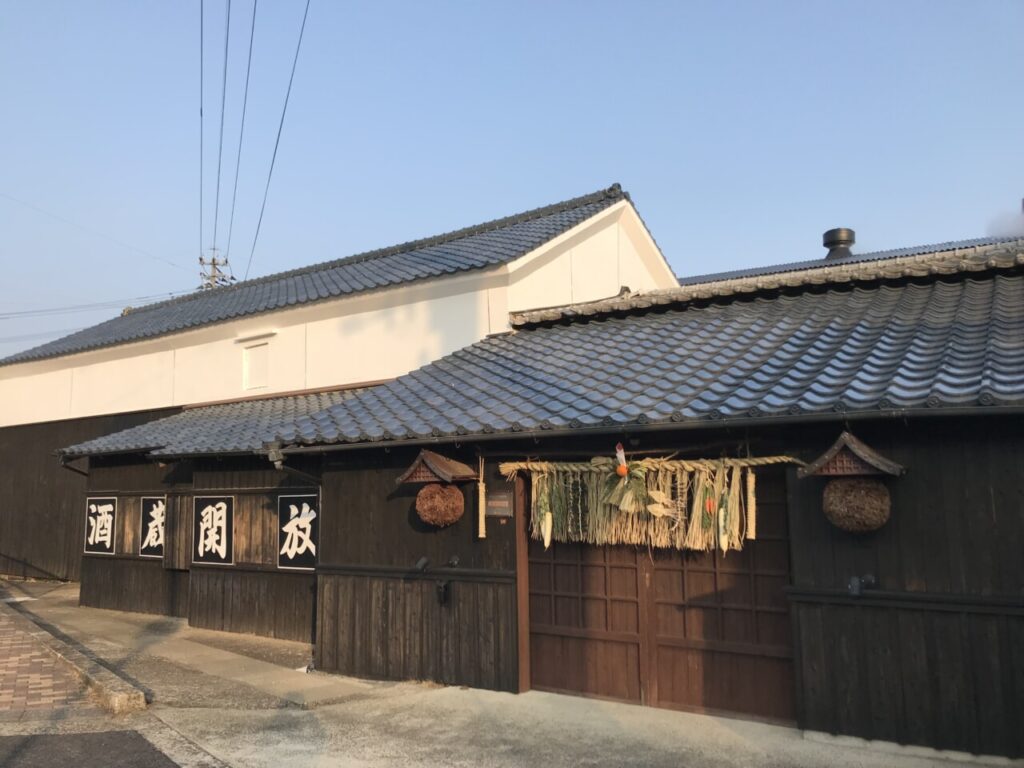
The city of Hirado, Nagasaki Prefecture, is a maritime city consisting of Hirado Island, which stretches long and narrow from north to south, and about 40 islands of various sizes scattered around the island. Known as “Philando” during the Age of Discovery, the city has developed as a trading center for people traveling between Japan and other countries. The scenery of the castle town, with its elegant rows of town houses, still remains, reminding us of the bustle of the old days.
In a corner of the town is the Mori Sake Brewery, a long-established sake brewery. Founded in 1895 by Kokichi Mori under the trade name “Komatsuya,” the brewery was incorporated in the 1930s and has been in business ever since. Currently, the brewery is headed by the fourth generation, Yukio Mori.
Until about five years ago, this sake brewery was on the verge of going out of business, with an annual production of less than 50 koku (1 koku = approximately 180 liters). Considering that it is generally said that a minimum of 400 koku is needed to run a sake brewery, the situation was quite difficult. The young toji, Yutaro Mori, the fifth generation of the brewery’s founder, was able to break through this situation.
I think anyone who was born in a brewery must have thought at least once about whether or not to take over the brewery,” he said. I was born and raised here, and I didn’t want to see the brewery disappear during my lifetime. That is why, at first, I wanted to preserve the brewery more than I wanted to make sake,” Yutaro recalls.
After deciding to take over the brewery, Yutaro majored in fermentation engineering at a university in Hiroshima. From undergraduate to graduate school, he studied cutting-edge sake brewing at the National Institute of Brewing Science, an independent administrative agency with which he was affiliated. However, his inquisitive mind and skills have already earned him a prominent position in the industry, and he is attracting attention as a “young toji prodigy.
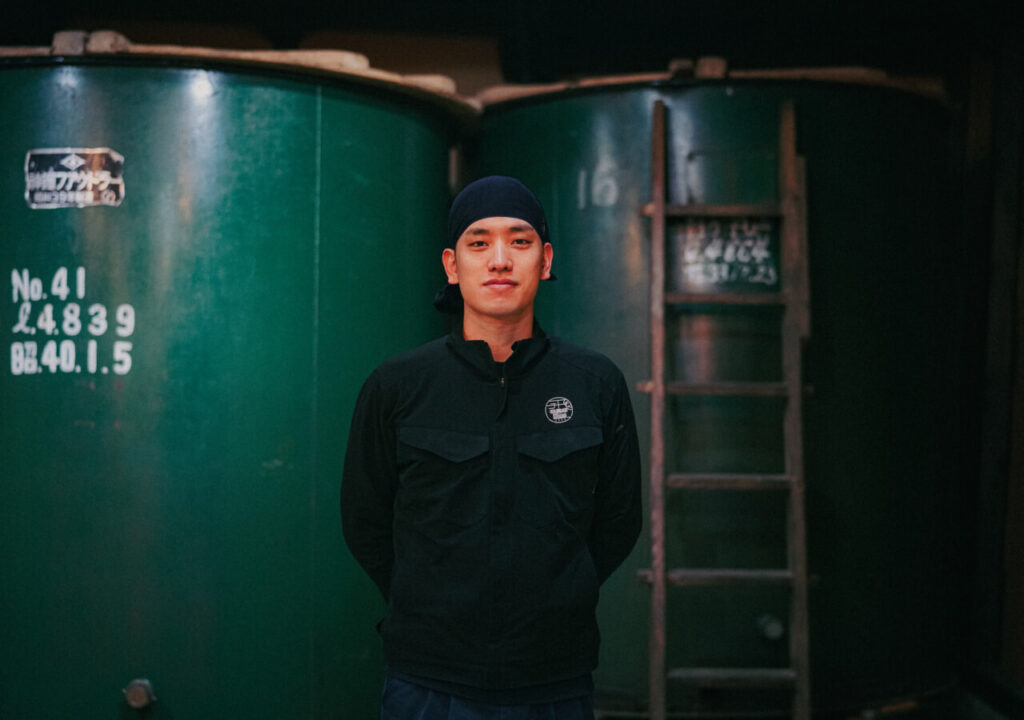
After completing graduate school and three years of training at a sake brewery in Miyagi Prefecture, Yutaro returned to Hirado at the age of 27. Yutaro felt a sense of crisis at the time, as the brewery had been without a toji for many years and had not been able to produce the sake that he wanted.
I believe that good sake is created not only by sake brewing techniques, but also by the environment of the brewery,” he said. In other words, the daily attitude of the brewery will be reflected in the sake. That is what I learned at my training place. However, when I returned to Hirado, the tools were rusty, and the walls and ceiling were covered with mold. It was no longer possible to make sake properly. The first year I spent in Hirado, I first prepared the environment for sake brewing,” he said.
Maintaining a hygienic environment is very important for sake brewing, which requires the power of microorganisms. Yutaro polished all the available tools and machines, left the beams and pillars of the brewery, repainted the walls, and re-poured concrete. The new brewery has a clean production area, a direct sales store in a renovated warehouse that has remained from the time of the company’s founding, and an event space with a classic atmosphere inside the warehouse.
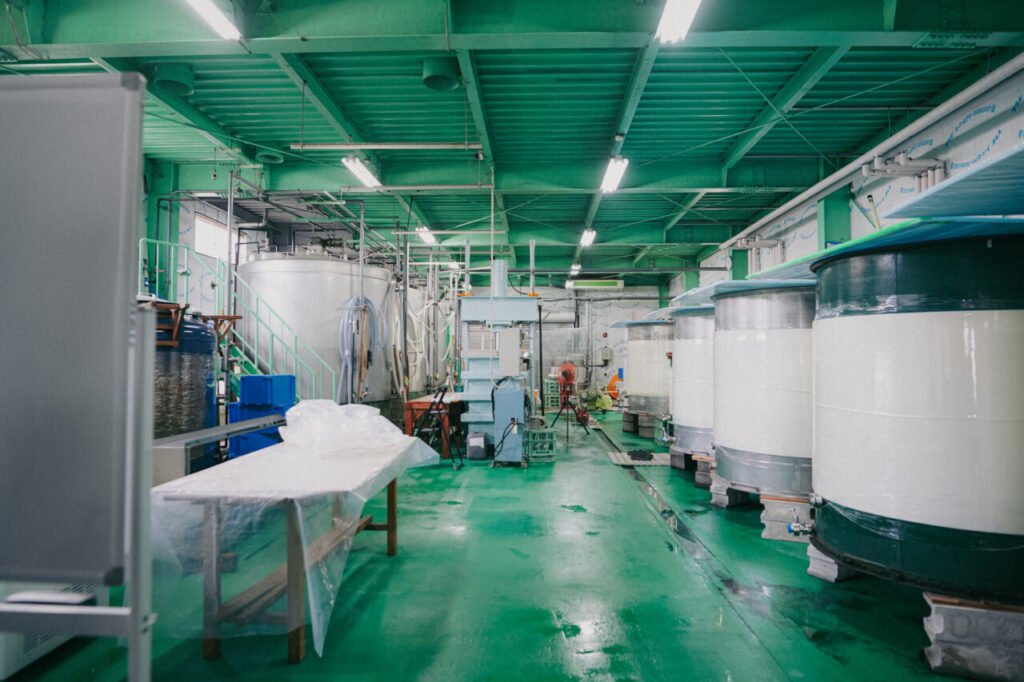
Mastering the art of sake brewing by letting nature take its course
When Yutaro returned to the brewery, there was no toji (master brewer) in charge of sake brewing, and sake made using a simple brewing technique called “liquefaction brewing” was only sold on the island.
Last year, the company introduced the traditional Japanese sake brewing process called “kimoto zukuri, ” which was established in the Edo period (1603-1868). In general, lactic acid for brewing is added to the mother of sake, which is the base of the unrefined sake, but in kimoto-zukuri, the lactic acid produced naturally by lactic acid bacteria is used. The process takes 40 to 45 days to complete, more than double the time required for normal sake brewing, and requires delicate control processes to cope with long-term changes in temperature and humidity.
On the other hand, in the sake brewing process, the yeast grows by natural means, competing with lactic acid bacteria for survival, resulting in the growth of strong and vigorous yeast and smooth fermentation. The various microorganisms produced during the fermentation process also affect the flavor of the sake, which has become increasingly popular among sake connoisseurs in recent years as a rich, full-flavored sake. Sake is also suitable for long-term aging, as it matures slowly over time, resulting in a sake with a solid core. Our sake tastes stable even after the bottle is opened, and we are confident of that,” he says proudly.
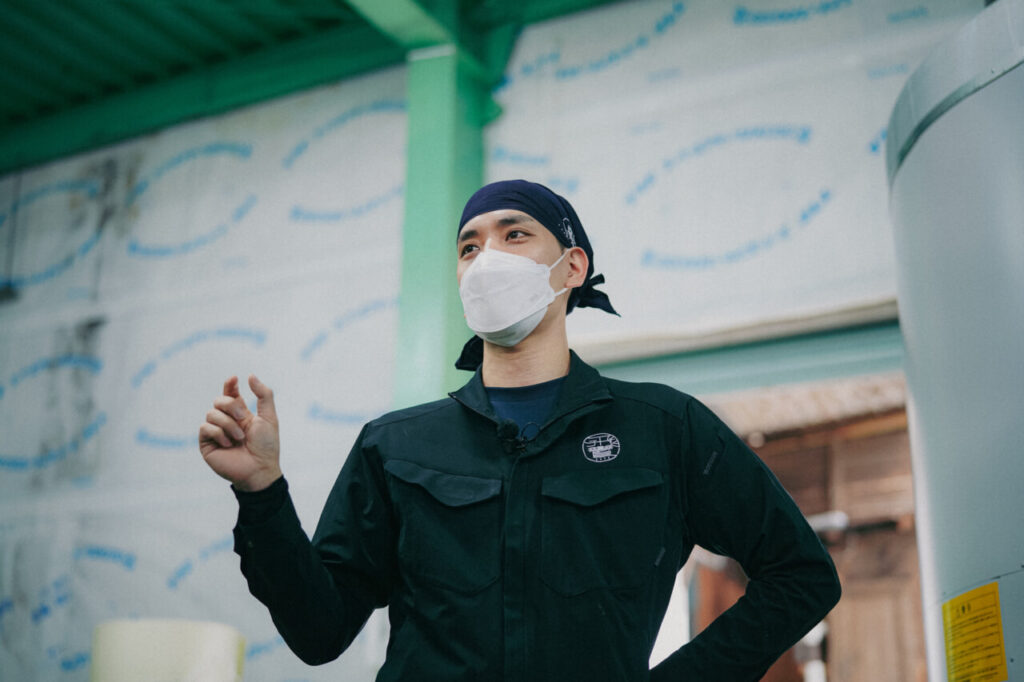
No Oaring, No Adding Water, No Filtration
Mori Sake Brewery does not use the oar-adding process, which is considered essential for sake brewing. Oaring is a process in which a long oar stick is used to stir the tank of unrefined sake to adjust the temperature and fermentation. In general, oar stirring is done twice a day, but here, the yeast is left to do its work and the natural convection is allowed to take place.
Furthermore, water is not added. Sake has a relatively high alcohol content among sake breweries worldwide, so most breweries add water to reduce the percentage of alcohol and adjust the balance of flavor. In addition, sake is not filtered to remove nigori (a thickening of the sake liquor) or to improve the aroma. Yutaro says, “For me, the best sake is the one that tastes the best when it is squeezed, so filtering or adding water is not part of my sake quality design.
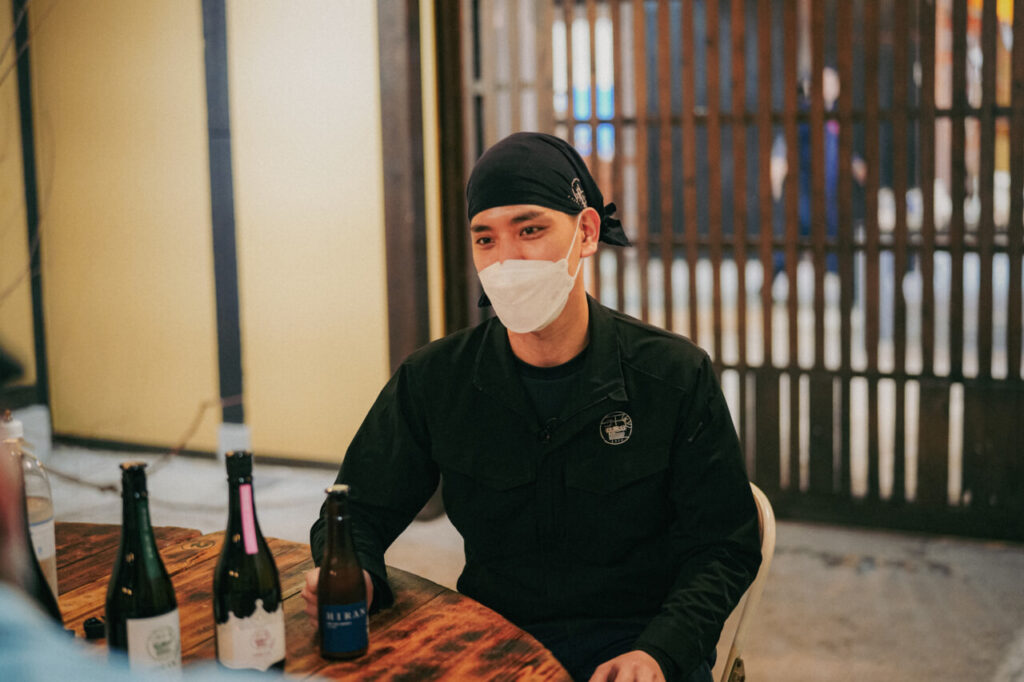
Spreading the Terroir of Hirado to the Nation and the World
The main brand of Mori Sake Brewery is the “Hiran” series. Hiran” is the old name for Hirado. Mori Sake Brewery has been brewing sake with a focus on the local climate and hopes that the terroir (local character) of Hirado will be conveyed to the drinker as well. There is a wide range of varieties, from fruity and light, to deep-flavored, crisp and refreshing, to light and unctuous, perfect as an in-between-dinner drink.
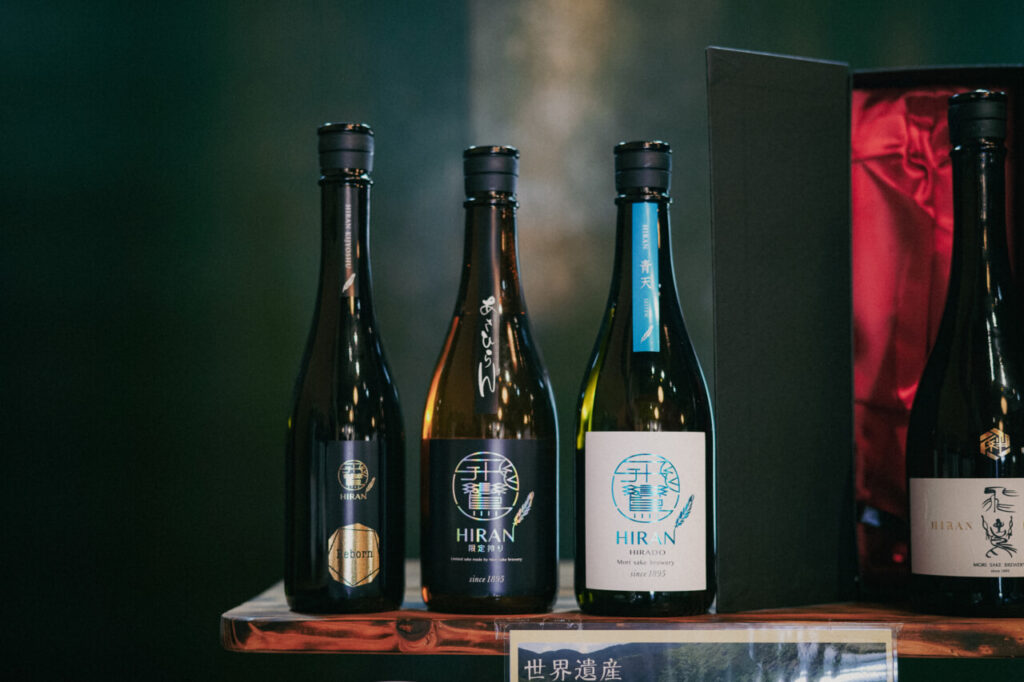
For the water used as a raw material, the company has been using the famous water that springs from the foot of Saikyoji Temple, located about 1 km away from the brewery since its establishment. In addition to Yamadanishiki rice, which is known as the best sake rice for brewing sake, Nagasaki’s edible rice “Nikkomaru” is used. The sake has a sour and moderately bitter taste that is intended to complement meals and be both tasty and sharp, making it an irresistibly drinkable sake.
Nagasaki does not have its own sake rice, but as a Nagasaki brewery, we wanted to make it unique. We tried Nikkomaru. The flavor of Nikomaru is effective in its mild aroma, but it is also a sake that can be drunk without hesitation as a mealtime sake. Yutaro says, “Just like the origin of the name Nikkomaru, which means ‘to make you smile when you eat,’ our goal is to create a sake that will naturally make you smile when you drink it.
Brewed in harmony with nature, without overdoing it in terms of ingredients and brewing methods, “Hiran” won a gold medal at the “KuraMaster” sake competition held in France in 2021, the second highest award after the platinum medal. It was also awarded a gold medal at the UK’s KuraMaster competition, and is highly acclaimed overseas.
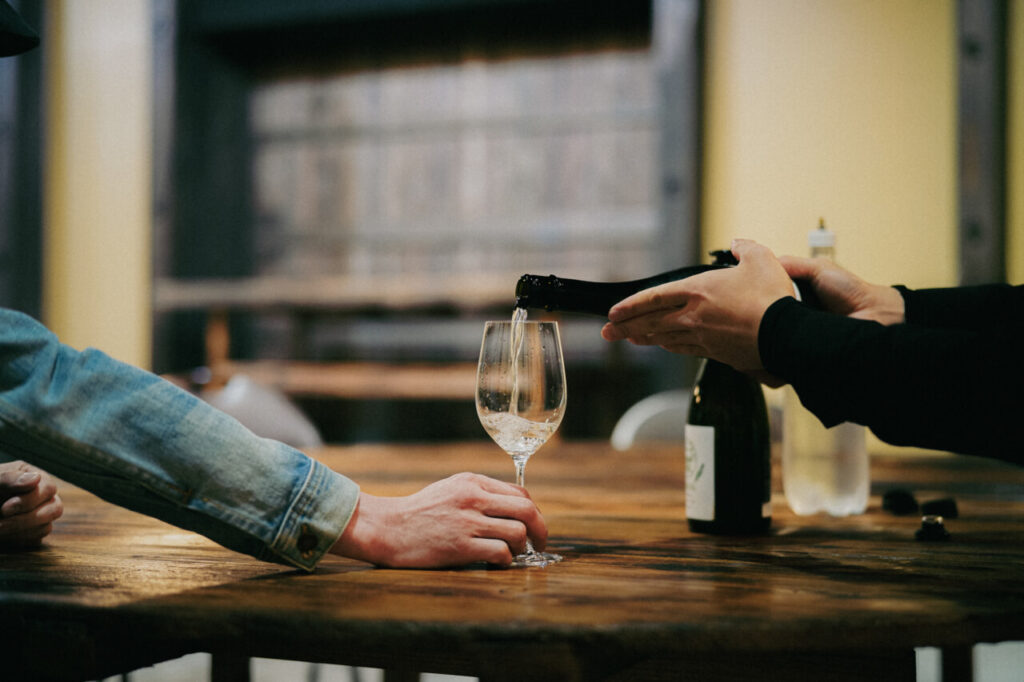
Cutting down the amount of ingredients to get closer to the natural one
Mr. Yutaro says that in the future he would like to be even more particular about his ingredients, and would like to use pesticide-free rice as well. His original decision to try out the kamishibashi method of sake brewing came from a single-minded desire to use a more natural production method.
I have a sensitive skin myself, and when I was growing rice, the pesticides made my skin rough,” Yutaro said. I wanted to reduce the amount of non-natural ingredients in the products that we put into our bodies, if possible, and that’s how I started making sake. Labor saving through rationality is also revolutionary, and it is because of this that sake brewing is flourishing today. If there are a variety of options, I would like to make sake in accordance with the flow of nature, not in accordance with the convenience of others.
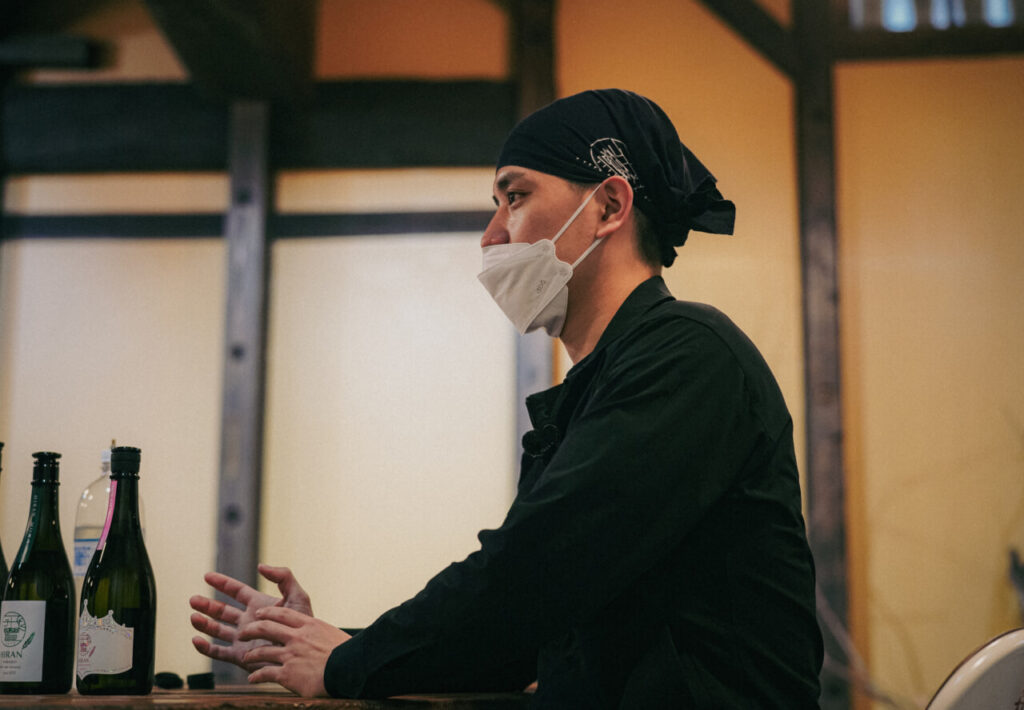
Yutaro is not only pursuing the taste of sake, but also the background of sake production, including society, the natural environment, and the coexistence of humans and microorganisms. Ultimately, I’m aiming for about 1,000 koku. If I go beyond that, I won’t be able to keep my eye on things. First of all, I will work hard to achieve a reasonable scale that suits this brewery.
In a sense, Mori Brewery appears to be a cutting-edge sake brewery, embodying the ” coexistence with nature ” that has been lost in the rapidly changing times. In a sense, it is a cutting-edge sake brewery. This is exactly what his father, Yukio, meant when he said, “Sake brewing that connects us to each other.
